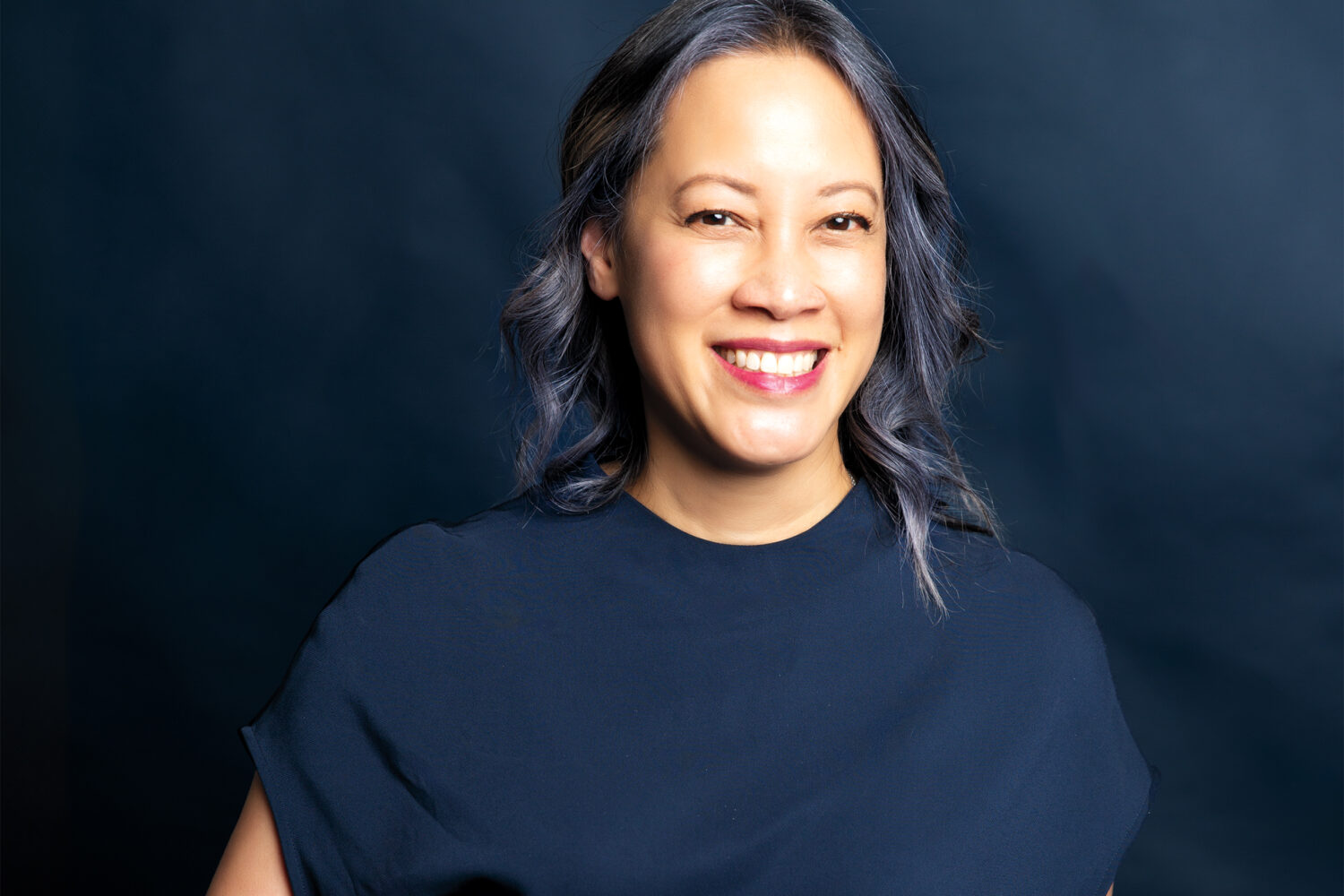Last summer, Gwynn Pollard was being ghosted—by her doctor. The now 24-year-old Cleveland Park resident needed to refill her medications but couldn’t get in touch with her physician.
Pollard had long been frustrated with the steps surrounding her monthly medications for ADHD and depression. She had to meet with her doctor monthly to refill them, and the doctor wasn’t easy to get hold of—each visit required more paperwork and phone calls (painfully analog for a Gen Z–er). So now that her doc was fully MIA, she decided to switch to One Medical, a membership-based primary-care group. Though it costs $199 a year, Pollard, a consultant at a development company, considered the money worth it: She could refill her prescriptions just by hitting a button on the app.
Pollard’s decision is emblematic of a larger trend—people opting for membership-centered medical platforms over traditional primary care after growing frustrated with long waits, short appointments, and other inconveniences. (New patients in metropolitan areas wait 24 days, on average, to get an appointment with a new PCP, according to a Merritt Hawkins survey.)
When the primary-care practice Sean McBride had been using downsized a few years ago, resulting in less time per patient, the 58-year-old Fairfax resident and founder of a public-relations company joined the Inova VIP 360 group. McBride is a fan of its membership-based care: He gets 24-7 communication with his doctors, more time with them during appointments, and access to Inova’s specialist network—no more sifting through referrals. “It’s a much more holistic level of care,” he says. “It takes the worries away about being able to get access when you have questions or don’t feel well.”
Inova 360 takes insurance (as does One Medical), but McBride also pays $2,000 annually—something he acknowledges is a luxury. Which brings us to the crux of membership models: With greater access come greater prices. Not everyone can afford that.
The (Membership-Based) Doctor Will See You Now
There are two standard types of care in the membership model: concierge medicine and direct primary care. Concierge medicine came about in the 1990s as a response to volume-based healthcare models, in which physicians are reimbursed according to the number of services they provide and therefore must see more patients daily, decreasing one-on-one time. Of the two, concierge medicine is usually bougier, more expensive, and often works with insurance. Direct primary care (DPC) originated as a way for doctors to provide similar boutique attention at more affordable rates. It’s typically not as luxe as concierge and usually doesn’t accept insurance, meaning no copays—your monthly fee covers everything.
While those practicing concierge and DPC medicine are a small percentage of the more than 1 million active doctors in the US, the industry is expanding. A 2005 Journal of General Internal Medicine article found only 152 “retainer physicians” in the country. It’s estimated that about 1,600 DPC groups now provide care to more than 300,000 people in the US, according to the Direct Primary Care Coalition. Concierge Medicine Today estimates that 10,000 to 25,000 physicians are practicing membership-based care throughout the country and abroad. Meanwhile, the 2021 concierge-medicine industry was valued at $5.5 billion; it’s expected to hit $13.3 billion by 2030.

The industry has varying provider styles: Groups such as One Medical, Forward, and Parsley Health are nationwide entities, while umbrella companies like SignatureMD and MDVIP help primary-care practices transition to and operate under a membership model; patients join a practice affiliated with one of these companies. And groups like Inova 360 operate under a larger healthcare system.
There are also independent membership-based practices—such as Healthy Home Pediatrics. Jalan Burton launched it in 2019 after leaving her “dream job” at a big DC hospital; the pediatrician came to realize that the high patient volume was causing physician burnout and a decrease in quality of care. “I don’t think it’s right to rush patients through visits,” she says. “And I don’t think it’s right for patients to see a different doctor every single time.”
She now practices from her Southeast DC home and via house calls. Previously, Burton had too many patients to count; now her goal is no more than 150. This means she can dedicate an hour to all visits and be more responsive—for instance, a parent can text Burton if a child is sick and she’ll come by the house. All this costs $150 to $500 a month, depending on the number of children, age, and distance, and Burton doesn’t take insurance.
Lisa Kaufman had a similar experience: The primary-care doctor worked independently for more than 30 years before shifting her practice, Dupont Private Health, to a membership model last year. Previously, Kaufman saw 20 patients daily, worked through lunch, left the office at 9 pm, and clocked in on weekends to get caught up. “I definitely felt burned out,” she says. “My life has changed substantially since then.” Now she has about 600 patients (as opposed to 3,000) and has the time to create personal and holistic healthcare plans. Membership in her practice is $1,800 a year, and the group accepts insurance.
Both Kaufman and Burton initially grappled with the decision to move to a membership model; Burton has a background in public health, so the idea of limiting access to those who could afford it was hard. (Burton plans eventually to offer a sliding scale and pro bono care.) But she decided the move allowed her to care for patients in a more thoughtful manner: “It was between serving a smaller number of people in a way that you truly believe in or serving more people in a way that actually could do harm.”
Burton and Kaufman’s initial reticence reflects some of the moral quandaries over membership healthcare. Supporters argue that it’s a way to provide patients with coverage at a time when healthcare-worker numbers are dropping, especially due to Covid. But others assert that membership care creates a two-tiered system rewarding the wealthy and that as more doctors move to this way of doing business, more people will be left without pathways to care. Currently, more than one in five people living within the highest-income US households (an annual base of $500,000) pay an additional amount for heightened access to their physician, according to a 2020 poll for NPR, the Robert Wood Johnson Foundation, and the Harvard T.H. Chan School of Public Health.
Jehan “Gigi” El-Bayoumi, a George Washington University internist and founding director of the Rodham Institute, which promotes DC-area health equity, understands why clinicians would gravitate to this platform—but that doesn’t mean she thinks it’s a good thing. “In fairness to the people that are doing this, this is a work-around because of a dysfunctional system,” she says. “What concerns me is that this is further exacerbating the disparities within our healthcare system.”
Take Ashley Kalena, a 37-year-old living in Park View who saw two other doctors at the same practice as Kaufman for eight years before it switched to a membership system. She couldn’t afford to pay the annual fee, so she left, had difficulty finding a new doctor, and was without a primary-care physician. (At the time, she worked at National Geographic; she’s now unemployed.) Kalena is chronically ill and depends on a set of prescriptions, some of which had lapsed because she was without a provider.
“It’s honestly been terrifying,” she says. “Just from this one doctor turning concierge, I’ve had so many issues trickle down.”

Is It Worth the Hype?
While some users such as Pollard and McBride are happy with their care via their membership platform, others have found that it doesn’t live up to the hype.
Alex Bloom, a 33-year-old who previously lived in Woodley Park but is now backpacking through Europe, started using One Medical several years ago. For a while, everything was good. But in the fall of 2020, he began having serious pain in his groin. His doctor scheduled him for an ultrasound to see if it was a hernia; it wasn’t, but Bloom says the doctor conveyed that message via the chat function without any follow-up information or suggestions. Bloom was still in pain and asked to be seen again, but he says the doctor didn’t have availability for weeks. Then came another ultrasound, after which Bloom says One Medical didn’t seem to have his records. His issue remained untreated, and he told the platform he wouldn’t renew his membership in 2021 due to his bad experience. One Medical said it would follow up with him, but according to Bloom, it never did.
Other One Medical issues have played out nationally: Last year, a congressional committee published a post-investigation memo claiming that One Medical gave company VIPs priority for Covid vaccines and that it used vaccines to increase profits. Additionally, employees are trying to unionize due to poor working conditions and what they call an emphasis on profit at the cost of patient care.
One Medical doctor Natasha Bhuyan says relationships are at the core of the platform: “It is really centered on the patient experience and on the team experience. We want our healthcare workers to feel good about caring for patients, because they’re able to deliver better care.” She points to patients’ ability to direct-message her 24-7 and to access a support team for things like medication refills and referrals. She also emphasizes the platform’s accessibility—it accepts insurance and offers financial assistance.
As Alex Bloom sees it, these big, online-focused groups are fine when you’re dealing with routine issues. But in his experience, their large presence can make it a challenge to get the attention you might like.
Jackie Nardelli, a 43-year-old Brandywine resident who works in marketing, had a similar experience at Forward. She first loved it when she started using it in 2019. She has a kidney disease that requires lab work every three to six months, and Forward made it easy for her to schedule an appointment quickly via the app and get results fast.
Her main problem is Forward’s chat function. Nardelli says it was difficult to tell whom she was texting with—sometimes the respondent would be identified as a doctor, other times as a member of a “care team.” Once, says Nardelli, she sent in a chat message asking how to treat an issue and the care-team respondent told her to take an NSAID—a class of medication that can be dangerous for people with kidney disease. Nardelli asked if they were sure; she was asked to hold. A while later, she says, a doctor came on the chat and told her she shouldn’t take it. “If I wasn’t an adult woman that knows my body and advocated for myself in that way, that chat function could be extremely dangerous,” Nardelli says.
Additionally, she says Forward didn’t provide the Covid support she would expect from a membership model, and employees regularly responded to her Covid chat questions by telling her to check with her local health department. She canceled her membership in March because she found it hard to get the level of attention she needed. “It’s kind of like Amazon or Uber. Like, if you have a problem, send an email,” she says. “What if I want to talk to someone?”
While Laura Billiet, Forward’s East Coast regional medicine lead, acknowledges the company is young and may still be ironing out some issues, she believes the model allows patients to receive better, more in-depth care and leads to a more collaborative, preventive approach: “What I really like is that Forward is actually working towards changing how healthcare is delivered, by integrating technology in smarter ways. I feel I’m also contributing to something that’s going to hopefully make things better for a lot more people over time.”
Membership-based healthcare, much like the traditional model, is not without its challenges. “My personal take is when I made an oath to take care of patients, I didn’t have an asterisk that said, ‘But it depends on their insurance status and their ability to pay,’ ” says Dr. El-Bayoumi of these platforms. However, she also acknowledges it’s never that simple when it comes to such a systemic issue: “Our healthcare system is in freefall. I always say we’re on the verge of a healthcare crisis, but we’re not—we’re in it.”
This article appears in the July 2022 issue of Washingtonian.




















